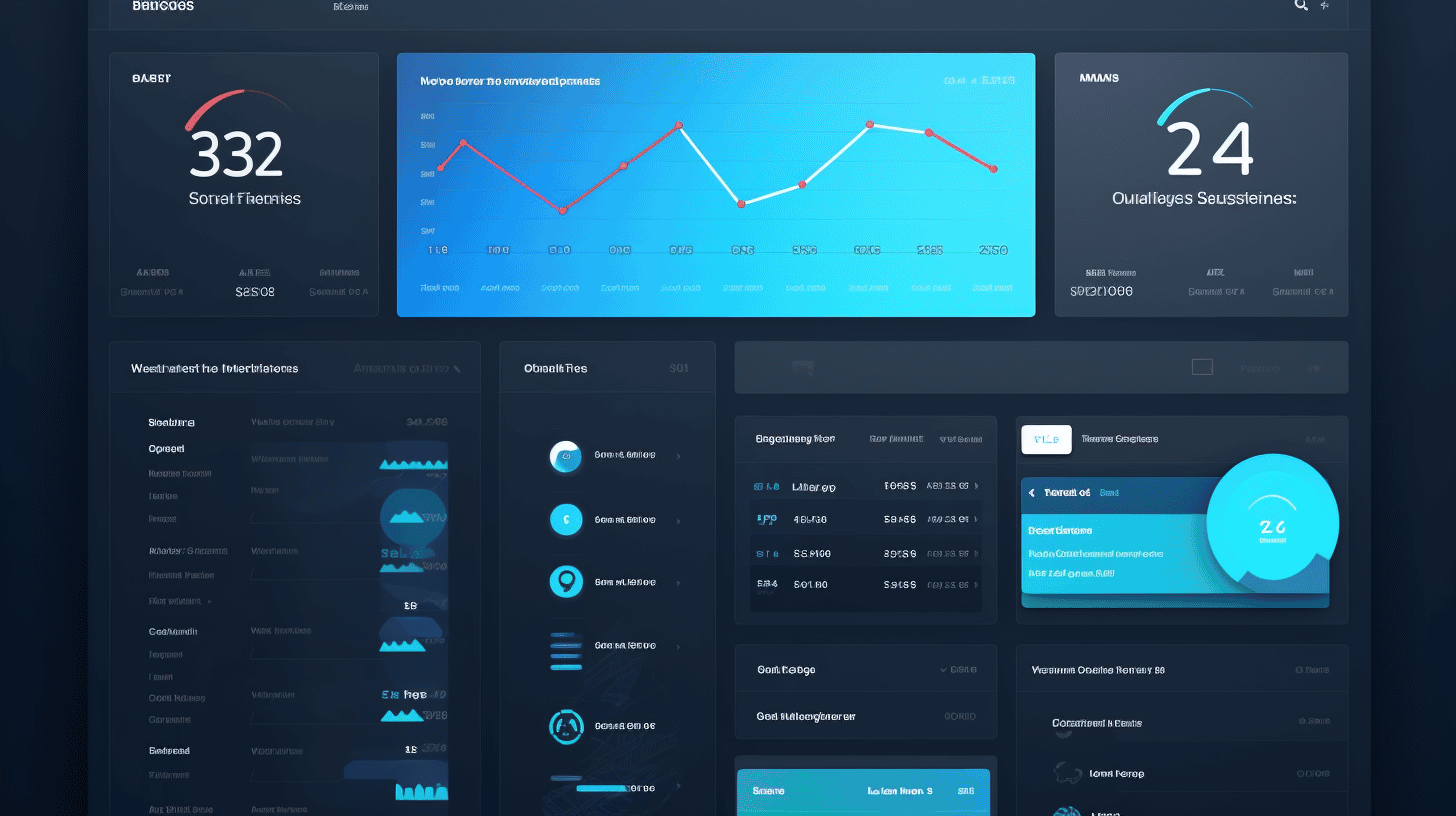The landscape of cloud hosting is evolving at an unprecedented pace, driven by technological advancements and the ever-growing demands of businesses worldwide. As we approach 2024, the trends shaping this sector are becoming increasingly clear, offering a glimpse into the future of cloud infrastructure. From the rise of multi-cloud strategies to the integration of cutting-edge technologies like AI and machine learning, the cloud hosting industry is poised to redefine efficiency, scalability, and security.
Businesses are no longer just migrating to the cloud; they are leveraging it to innovate, optimize, and gain a competitive edge. The focus is now on sustainable practices, edge computing, and serverless architectures, all of which are transforming how organizations operate in the digital age. Additionally, enhanced security measures and the widespread adoption of Kubernetes and containerization are ensuring that cloud hosting remains robust and reliable.
This article delves into the top trends in cloud hosting to watch in 2024, offering insights into how these developments will shape the industry and empower businesses to thrive in an increasingly connected world. 🌐 Whether you’re a tech enthusiast or a business leader, understanding these trends will help you stay ahead in the ever-changing cloud landscape.
Increased Adoption of Multi-Cloud Strategies
In recent years, businesses have increasingly embraced multi-cloud strategies as a cornerstone of their digital transformation. This shift is fueled by the desire to avoid vendor lock-in and enhance operational resilience. By leveraging multiple cloud platforms, organizations can distribute workloads across different environments, ensuring greater flexibility and redundancy. 🌐
One of the primary drivers behind this trend is the need for scalability and reliability. Relying on a single cloud provider can pose risks, such as potential downtime or limited customization options. Multi-cloud setups, on the other hand, allow businesses to cherry-pick the best services from various providers, optimizing performance and cost-efficiency. 💡
Additionally, the adoption of multi-cloud strategies aligns with the growing emphasis on data sovereignty and compliance. Companies operating across different regions can choose cloud providers that meet specific regulatory requirements, safeguarding sensitive information while maintaining seamless operations. 🔒
As technology continues to evolve, the multi-cloud approach is becoming less of an option and more of a necessity. Businesses that integrate this strategy into their infrastructure are better positioned to adapt to changing market demands, ensuring long-term success in an increasingly competitive landscape. 🚀 By diversifying their cloud ecosystems, they not only mitigate risks but also unlock new opportunities for innovation and growth.
Rise of Edge Computing in Cloud Hosting
The integration of edge computing into cloud hosting is revolutionizing the way data is processed and managed. Unlike traditional cloud architectures that rely on centralized data centers, edge computing brings computation and data storage closer to the source of data generation. This shift significantly reduces latency, making it ideal for applications that demand real-time responsiveness, such as autonomous vehicles, IoT devices, and augmented reality systems 🚗🤖.
In 2024, the adoption of edge computing is expected to accelerate as cloud hosting providers recognize its potential to enhance performance and efficiency. By decentralizing data processing, these providers can offer faster and more reliable services, particularly for industries like healthcare, manufacturing, and telecommunications. For instance, in remote surgeries or industrial automation, even a millisecond delay can be critical. Edge computing ensures that data is processed on-site or at nearby edge nodes, minimizing delays and improving user experience ⚡️.
Moreover, the growth of 5G networks is further fueling the rise of edge computing. The high bandwidth and low latency of 5G complement edge infrastructure, enabling seamless connectivity and data transfer. This synergy is particularly beneficial for applications like smart cities and video streaming, where real-time data processing is paramount 🌐.
Cloud hosting providers are increasingly integrating edge capabilities into their platforms, allowing businesses to leverage both centralized cloud resources and decentralized edge nodes. This hybrid approach not only optimizes performance but also enhances scalability and cost-effectiveness. As organizations continue to embrace digital transformation, edge computing is poised to become a cornerstone of modern cloud hosting strategies 💡.
In summary, the rise of edge computing marks a pivotal shift in cloud hosting, offering unprecedented speed, efficiency, and reliability. As technology evolves, its integration will undoubtedly shape the future of digital infrastructure, enabling smarter, faster, and more connected solutions 🌟.
Enhanced Security and Compliance Measures
In today’s digital landscape, the rise in cyber threats has made enhanced security and compliance measures a critical focus for cloud hosting providers. 🔒 As businesses increasingly rely on cloud solutions to store and manage sensitive data, ensuring robust protection against breaches, malware, and unauthorized access has become non-negotiable. Cloud providers are investing in advanced technologies such as encryption, multi-factor authentication (MFA), and real-time threat detection to safeguard their users’ information.
Additionally, compliance with global data protection regulations like GDPR, HIPAA, and CCPA remains a top priority. 🌍 These frameworks set strict guidelines for how data should be handled, stored, and protected. By adhering to these standards, cloud hosting providers not only build trust with their clients but also help businesses avoid hefty fines and legal repercussions.
For those seeking a secure and compliant cloud hosting solution, exploring options that prioritize data integrity and regulatory adherence is essential. A reliable provider will offer transparent policies, regular audits, and tools to help users meet their compliance requirements effortlessly. With the right measures in place, businesses can confidently leverage the power of the cloud while mitigating risks effectively. 🛡️
Serverless Architecture Gains Momentum
Serverless architecture is rapidly gaining traction as businesses seek more efficient and scalable solutions for their cloud hosting needs. 🌐 This innovative approach eliminates the need for managing physical servers, allowing companies to focus solely on their applications and services. By 2024, it is projected that a significant number of organizations will transition to serverless solutions, driven by the promise of cost efficiency and seamless scalability. 💼
One of the key advantages of serverless architecture is its pay-as-you-go model, which ensures that businesses only pay for the resources they actually use. This not only reduces operational costs but also minimizes waste. Additionally, the inherent scalability of serverless platforms means that applications can automatically adjust to fluctuating demands, ensuring optimal performance without manual intervention. 📈
Another compelling benefit is the simplified maintenance and deployment process. Developers no longer need to worry about server provisioning, patching, or scaling, as these tasks are handled by the cloud provider. This shift allows teams to accelerate development cycles and focus on delivering innovative features to their users. 🚀
As industries continue to embrace digital transformation, serverless architecture is poised to play a pivotal role in shaping the future of cloud computing. Its ability to streamline operations, reduce costs, and enhance scalability makes it an attractive choice for businesses of all sizes. By leveraging the power of serverless solutions, organizations can stay ahead in a competitive landscape while delivering exceptional user experiences. 💡
AI and Machine Learning Integration
The integration of AI and machine learning into cloud hosting is revolutionizing the way resources are managed and data is analyzed. By leveraging these advanced technologies, cloud services are becoming more efficient and effective, offering businesses unparalleled scalability and precision. 🤖✨
One of the most significant benefits of this integration is optimized resource management. AI-driven algorithms can dynamically allocate computing power, storage, and bandwidth based on real-time demand. This ensures that resources are used judiciously, minimizing waste and reducing operational costs. For example, during peak traffic periods, AI can automatically scale up resources, and during lulls, it can scale them down, ensuring optimal performance without manual intervention.
Additionally, predictive analytics powered by machine learning enables cloud systems to anticipate future trends and potential issues. By analyzing historical data patterns, these systems can predict spikes in usage, identify potential bottlenecks, and even foresee hardware failures before they occur. This proactive approach not only enhances reliability but also reduces downtime, providing a smoother experience for end-users.
Moreover, the integration of AI and machine learning into cloud hosting fosters intelligent automation. Routine tasks such as software updates, security patches, and data backups can be automated with minimal human oversight. This not only frees up IT teams to focus on strategic initiatives but also ensures that systems are always up-to-date and secure. 🔒
As AI continues to evolve, its role in cloud hosting will only grow more sophisticated. From enhancing cybersecurity to enabling personalized user experiences, the possibilities are endless. Businesses that embrace this integration will gain a competitive edge, as they can deliver faster, smarter, and more reliable cloud services. 🌐
In essence, the fusion of AI, machine learning, and cloud hosting is not just a technological advancement—it’s a game-changer that is reshaping the future of digital infrastructure. 🚀
Sustainable Cloud Hosting Solutions
In today’s digital age, sustainability is no longer just a buzzword—it’s a necessity. As businesses increasingly rely on cloud hosting for their operations, the environmental impact of data centers has come under scrutiny. 🌍 Sustainable cloud hosting solutions are emerging as a game-changer, addressing the urgent need to reduce carbon footprints while maintaining high-performance standards.
Leading cloud hosting providers are taking significant strides to embrace eco-friendly practices. One of the primary strategies is the transition to renewable energy sources, such as solar, wind, and hydropower, to fuel their data centers. By leveraging these clean energy alternatives, providers can minimize their reliance on fossil fuels and significantly cut greenhouse gas emissions. ☀️💧
Another key focus is optimizing data center efficiency. Advanced cooling technologies, energy-efficient servers, and intelligent workload distribution systems are being implemented to reduce energy consumption. For instance, some providers use AI-driven algorithms to dynamically allocate resources, ensuring that servers operate at peak efficiency without unnecessary power usage. 🌱✨
Moreover, circular economy principles are being integrated into the lifecycle of hardware. Instead of discarding outdated equipment, many providers are refurbishing or recycling components, extending their usability, and reducing electronic waste. This approach not only supports environmental goals but also aligns with cost-saving initiatives. ♻️💡
For businesses, choosing a sustainable cloud hosting provider is a step toward achieving their corporate social responsibility (CSR) objectives. It demonstrates a commitment to environmental stewardship while ensuring reliable and scalable cloud services. As the demand for greener technologies grows, these solutions are set to become the standard, paving the way for a more sustainable digital future. 🌿🚀
By prioritizing sustainability in cloud hosting, providers and users alike can contribute to a healthier planet while staying ahead in the competitive tech landscape.
Kubernetes and Containerization
In the ever-evolving landscape of cloud hosting, Kubernetes and containerization have emerged as pivotal technologies, reshaping the way modern infrastructures are designed and managed. 🌐 These tools have become synonymous with scalability, portability, and efficiency, making them indispensable for organizations aiming to stay ahead in the digital era.
Containerization allows applications to be packaged with all their dependencies, ensuring they run consistently across various environments. This eliminates the common issue of “it works on my machine” by creating isolated, lightweight environments that can be deployed anywhere. 🛠️ Kubernetes, on the other hand, acts as an orchestration platform, automating the deployment, scaling, and management of containerized applications. Together, they form a robust ecosystem that simplifies complex workflows and enhances operational resilience.
One of the standout benefits of these technologies is their ability to support microservices architecture. By breaking down applications into smaller, independent components, teams can develop, deploy, and scale services more efficiently. Kubernetes ensures these microservices work seamlessly together, even in large-scale deployments. 🚀
Furthermore, Kubernetes and containerization are highly compatible with multi-cloud strategies. Organizations can deploy applications across different cloud providers without worrying about vendor lock-in. This flexibility not only optimizes costs but also ensures high availability and disaster recovery. ☁️
As businesses continue to embrace cloud-native development, the synergy between Kubernetes and containerization will remain a cornerstone of innovation. Their combined power enables faster development cycles, reduced downtime, and a more agile approach to handling modern IT challenges.
For those looking to dive deeper into how these technologies can transform their cloud strategy, understanding the fundamentals of Kubernetes and Containerization is an excellent starting point. With their proven track record, it’s clear why they dominate the cloud hosting space today. 🌟
Conclusion
As the cloud hosting landscape continues to evolve, staying ahead of these trends is crucial for businesses aiming to optimize their digital presence. By embracing innovations like multi-cloud strategies, edge computing, and AI integration, organizations can unlock new levels of efficiency and scalability. For those seeking a reliable partner to navigate this dynamic environment, Managed-WP.™ offers a premium managed WordPress cloud hosting solution tailored to meet modern demands. With expert support and proactive monitoring, they ensure a seamless and secure hosting experience. Explore how Managed-WP can empower your digital journey by visiting managed-wp.com. 🌐🔥
Frequently Asked Questions
- What are the key trends in cloud hosting to watch in 2024?
Key trends in cloud hosting for 2024 include the rise of edge computing, increased adoption of multi-cloud and hybrid cloud strategies, enhanced focus on serverless architecture, advancements in AI-driven cloud optimization, and greater emphasis on sustainability in cloud infrastructure.
- Why is edge computing becoming a major trend in cloud hosting?
Edge computing is becoming a major trend in cloud hosting because it reduces latency by processing data closer to the source, improves performance for real-time applications, and enhances user experience, particularly for IoT devices and content delivery networks (CDNs).
- What are the benefits of multi-cloud and hybrid cloud strategies in 2024?
Multi-cloud and hybrid cloud strategies offer benefits such as increased flexibility, reduced risk of vendor lock-in, improved disaster recovery, better cost optimization, and the ability to leverage the strengths of different cloud providers for specific workloads.
- How is AI influencing cloud hosting trends in 2024?
AI is influencing cloud hosting trends by enabling smarter resource allocation, predictive analytics for cost and performance optimization, automated scaling, and enhanced security measures like anomaly detection and threat prevention.
- How are cloud hosting providers addressing sustainability in 2024?
Cloud hosting providers are addressing sustainability by adopting renewable energy sources, improving energy efficiency in data centers, reducing carbon footprints, and offering tools for customers to monitor and minimize their environmental impact.



















